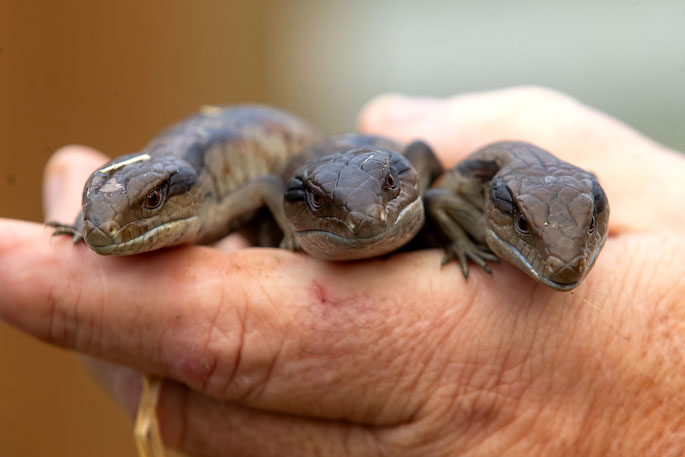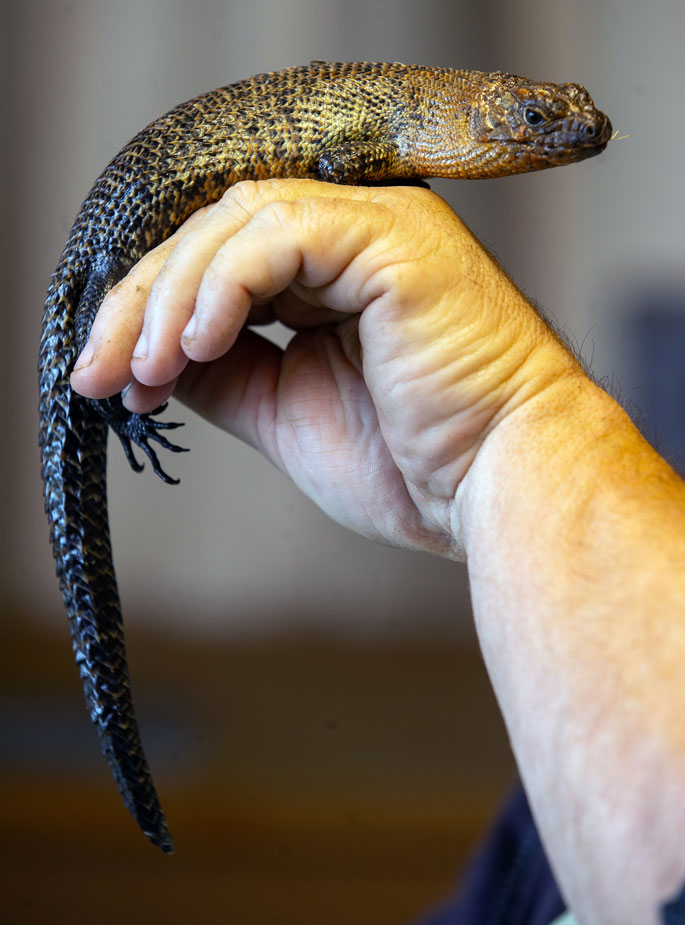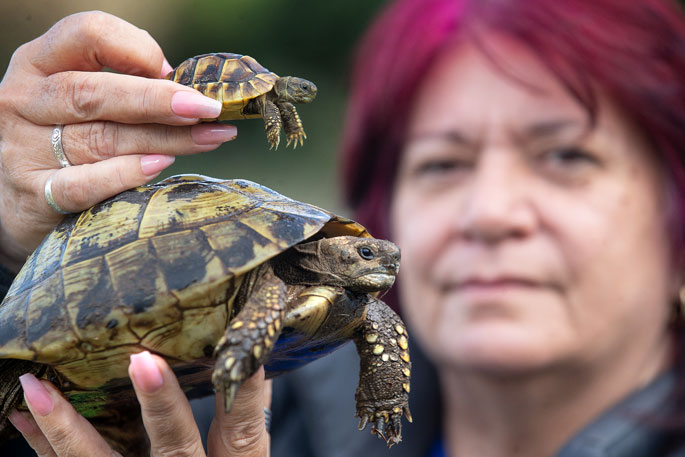While Donna and Graeme Hannah’s neighbours on one of the rural ‘veins’ – the side roads – of Katikati tend to and grow their orchards and livestock, they are breeding something a little unusual.
The Lindemann Rd couple are reptile breeders who have built up an extensive knowledge base and reputation during a journey of more than 40 years of caring for the critters.
“My uncle turned up on my 7th birthday with a pair of pigeons and a golden pheasant,” says Graeme. “By the time I was 13, I had about 20 aviaries. I got my first reptile years later – a blue-tongued lizard – and it just snowballed from there.”
The couple still have that first lizard, but in recent years they’ve moved from a house and backyard in Katikati township to a large block of land, which they have used as a blank canvas to create a reptile world.
A menagerie
Here they share their 5ha property with four rottweilers, five alpacas and three ostriches as well as aviaries full of birds, reptiles and guinea pigs.
The couple sells a range of reptiles – from turtles and tortoises to dragons, skinks and geckos – plus accessories such as lighting, heating and food via their online store Reptile World.
 Graeme Hannah with a one-year-old Australian Blue Tongue Lizard (Tiliqua scincoides scincoides) licking his nose. Photo: John Borren.
Graeme Hannah with a one-year-old Australian Blue Tongue Lizard (Tiliqua scincoides scincoides) licking his nose. Photo: John Borren.
When people ask which cold-blooded pet to start with, Graeme recommends blue-tongued lizards.
“They’re the easiest to care for. You can feed them specific brands of cat food, snails, boiled eggs, and mashed bananas, but they prefer snails – and kids enjoy hunting for their pet’s food.”
He also stresses the importance of parental involvement. “Parents need to be able to handle the animal because they’ll need to care for it when their child is away.
“The reptile’s home needs to be right for the animal, and that’s our priority. We’ve turned people down if we thought the animal wouldn’t be cared for properly.”
Youngsters
Donna says most reptiles are solitary but need objects in their enclosure to help them shed. “People often don’t realise this. Handling your reptile helps you notice when they start to shed and how to help them.”
Graeme agrees. “I can sit for ages with a bearded dragon on my chest, just rubbing its scales to help remove the loose skin.”
 Three Australian Blue Tongue Lizards (Tiliqua scincoides scincoides) which are about five months old. Photo: John Borren.
Three Australian Blue Tongue Lizards (Tiliqua scincoides scincoides) which are about five months old. Photo: John Borren.
The couple believes it’s the low-maintenance nature of reptiles that appeals to youngsters. “They’re not demanding, so you interact with them on your terms,” says Donna.
And since Covid-19, the Hannahs have noticed a surge in sales. “I think reptiles are more available now.
“Years ago, you wouldn’t see many, but now kids find them in classrooms, or their friends have one.
“We’ve had people flying up from Christchurch and driving up from Wellington to pick up a reptile and then travel home.”
Graeme says when people buy from them, they don’t just get the animal – “they get our knowledge and advice about UV lights, heating, food, and the enclosure”.
“We’re also available to help if the animal isn’t doing what it should be. That’s the difference between us and a pet shop.”
Graeme says people think his Reptile World is a business. “But to me, it’s a hobby. I can walk out there every day, feed my birds, ostriches, alpacas, and cows, and I just love it.”
New mission
The couple also have a new mission, they want to teach reptile owners to be more responsible with their cold-blooded pets.
They’re concerned about the growing number of abandoned reptiles in Aotearoa, including in the Bay of Plenty.
 A four-year-old Australian Cunningham Skink (Egernia cunninghami). Photo: John Borren.
A four-year-old Australian Cunningham Skink (Egernia cunninghami). Photo: John Borren.
“We quite often get phone calls from people, including from Pāpāmoa, who have found a red-eared turtle. They’re definitely getting released and breeding over there,” says Donna.
“They start off cute, around the size of a 50 cent piece,” says Graeme. “But they grow to the size of a dinner plate, needing more maintenance, a bigger tank, or a pond outside. That’s when people tend to just let them go.”
To address this issue, the couple has introduced a “swap a turtle” programme, where they take in full-grown red-eared turtles and exchange them.
Their property, with new ponds planned, currently houses about 50 turtles. “The idea is to keep them out of the waterways and maintain kids’ interest,” says Graeme.
“They’re meat eaters and will go after our native fish, freshwater crayfish, and duck eggs,” says Donna. “We just want people to be responsible pet owners.”



1 comment
NZTA wants those veins blocked
Posted on 25-07-2024 17:16 | By GreenRidgeFarm
Like how you described the side roads as veins 👍
Not if NZTA, has their way, they plan on blocking the veins and inflicting a travel tax on everyone that lives on them daily.
Wright Road has now had their access blocked by the barrier, and it’s causing mayhem, including two near misses with locals having to use the “safe” roundabouts nearly being taken out by truck and trailers not expecting people to go 180 around the roundabout! Madness, so much for safer roads, I’m more worried about using Morton rd roundabout now than I ever have been turning right into or out of my road!
Heads should roll at BECA and NZTA.
Leave a Comment
You must be logged in to make a comment.